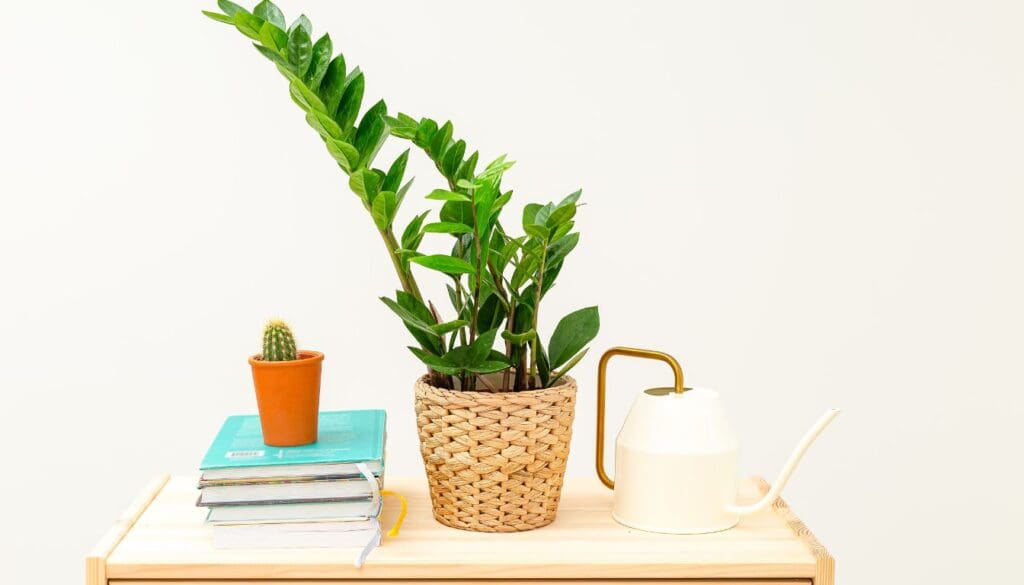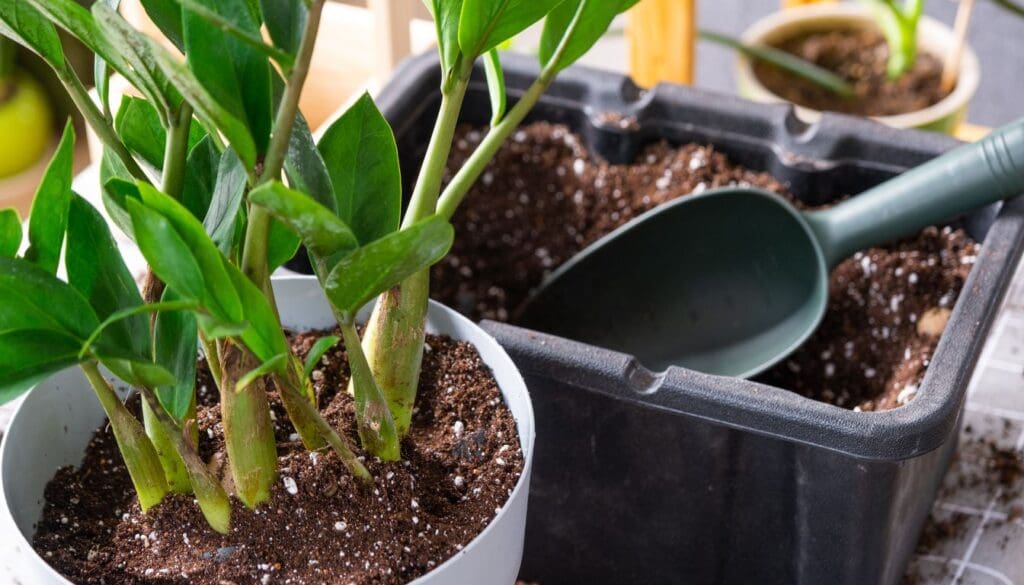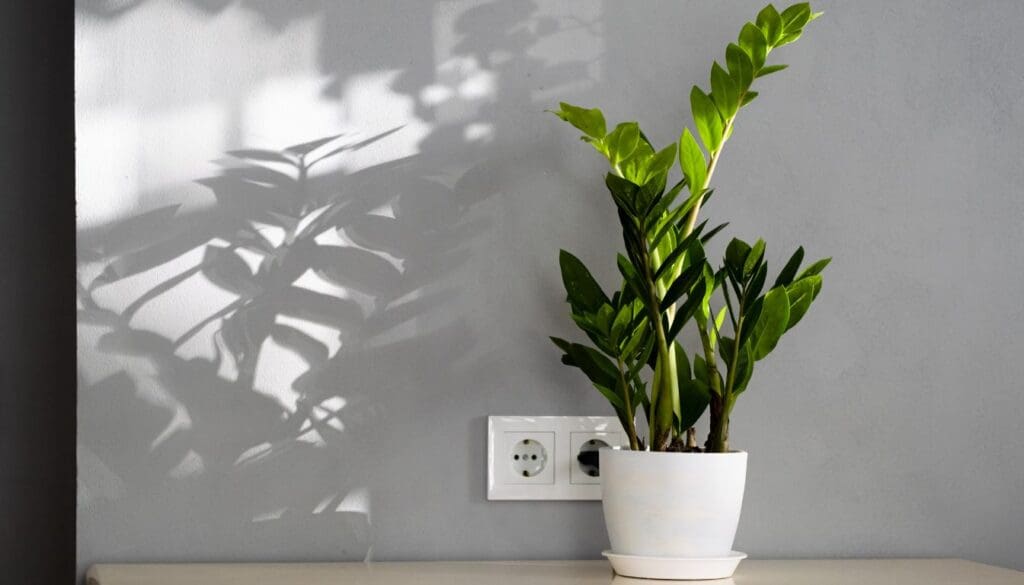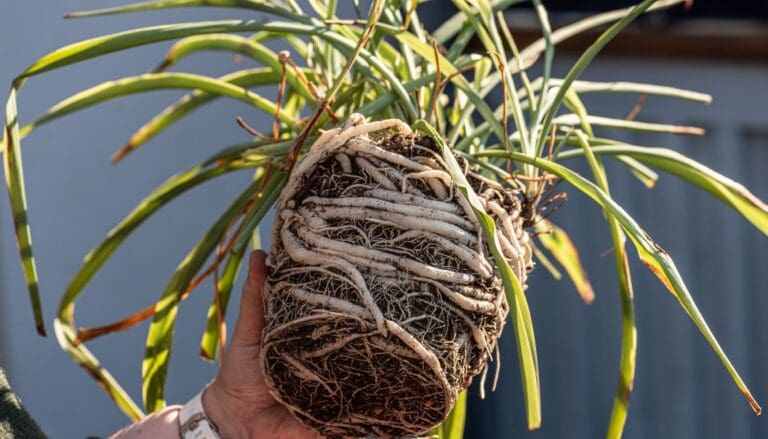6 Reasons Why Your ZZ Plant Is Not Growing
ZZ plants are beautiful tropical plants that you can keep in a corner without much attention, and you will still find them thriving.
But if there is no new growth or the plant is still the same, then there’s something you need to look after. But why is your ZZ plant not growing, and how can you fix the same? Let’s find out!
ZZ plants are slow growers by nature, and they tend to go dormant during the winter months. Thus, you will notice negligible growth at that time. Apart from that, lack of nutrients, improper lighting, and fluctuations in temperature and humidity can also restrict the ZZ plant’s growth.
There can be various factors due to which your ZZ plant might be struggling. While some plant doesn’t get proper living conditions other don’t have adequate nutrients to grow.
Whatever the case may be, you need to find the cause and fix it before your plant starts suffering.
We are here to make it easier for you by putting all the essential factors you need to consider while growing your ZZ plant and help you grow your ZZ plant faster and healthier.

Please note: Simplify Plants is reader-supported. Some links in the post are affiliate links and I get a commission from purchases made through links in the post.
Why has my ZZ plant stopped growing?
ZZ plants are slow-growing plants, and they will hardly grow few inches in a year. But if you cannot see any growth for a long time, then you must consider checking if the requirements like watering, lighting are appropriate or not.
It’s tough to see your baby plants stagnating growth. It would be best if you went through the matter to find out possible reasons hindering your plants’ growth.
In our experience and study, we have found that the following reasons commonly affect the ZZ plant’s growth.
- Time of the year
- Watering
- Types of potting soil used
- Light conditions
- Temperature and Humidity
- The size of the pot
Let us study these common causes more to find out what is bothering our ZZ plant and fix them.
Time of the year
Most houseplants, including your ZZ plants, grow only at a certain period every year. If you move your plant indoors, it doesn’t mean their instinct won’t work. They will act according to the growing period and dormant period even when kept indoors.
That is why you will see your ZZ plant and other houseplants that you own gets dormant during winter.
During winter, the ZZ plant stores nutrients, uses energy to stimulate root growth, and fights and survives extreme weather conditions such as cold, dry air, low sunlight, frigid temperatures, etc.
It does not mean your ZZ plant will never wake up. This is a preparation for new growth that is coming spring and summer. When the days get shorter, the plant will be done with any new growth and starts when the spring rolls around.
Keep good care of your ZZ plant during winter. They are resting but should not be neglected completely. Take care of their requirements and manage them to make sure your plant is comfortable.
Also read: How to care for ZZ plant in winter?
Inadequate Watering
Watering your ZZ plant is relatively easy but can become tricky if you do not follow the simple rules. They can survive under-watering but don’t appreciate over-watering at any cost.
You have to keep in mind a few things to make your ZZ plant thrive and healthy.
Underwatering of the ZZ plant

ZZ plants are not water-loving plants, but if you are one of those lazy planters who want complete freedom while caring for your plants, then your ZZ plant might not see enough growth.
We understand that ZZ plants like to stay dry, but if you neglect their watering needs altogether, you might see stagnant growth.
You can identify the watering requirements through the soil condition of your ZZ plant. If the soil is extremely dry, its color turns light brown it looks flaky.
Your ZZ plant’s leaves will start turning yellow due to dehydration. Droopy leaves and widespread dropping of leaves indicate a dry ZZ plant.
The season is also responsible for your growth issues. Often planters do not change their watering routine during the different seasons, which might adversely affect your ZZ plant’s health.
Overwatering of the ZZ plant
ZZ plants cannot tolerate overwatering and can wilt due to the shock of overwatering.
The leaves are the first ones to get affected as the soil and roots are suffocated with water, the water and nutrients are unable to flow through the entire plant.
The leaves turn yellow and develop blotches and drop with time. Thus, the growth of your ZZ plant is likely to suffer.
The ZZ plants like to stay dry, and when kept soggy, it can affect them for life. You can risk your ZZ plant’s growth and life by over-watering them.
You must keep examining your ZZ plant, especially when the season and other conditions change around them. Change is consistent, and so their care routine should change according to their environment.
How to avoid overwatering
Overwatering can be avoided by assessing your ZZ plant’s water needs from time to time. You should check the moisture level before watering your ZZ plant.
You can use a moisture meter to determine the soil’s moisture level, or use your finger and dig your finger from the top of the soil up to a few inches. If the soil is still moist, you need to hold on to your watering regime until the soil gets completely dry.
ZZ has an efficient water retention mechanism which means there are minimal chances of dehydration. The soil should be dry throughout the container for several days for the plant to dehydrate.
Stay on the side of underwatering rather than overwatering.
Few tips for watering
While watering, you should check that the excess water is drained out of the drainage holes completely.
Let the soil dry out completely between watering.
The leaves of your ZZ plant are already shiny, so you should wipe them with a damp cloth or mist occasionally because too much water on leaves can lead to yellow or brown leaves.
Change your watering routine with the cultural changes, don’t follow a routine blindly.
Also read: How often should I water my ZZ plant?
Type of potting soil used

The potting medium of any plant is essential for its growth and development. Like any other plant, your ZZ plant is planted in soil and gets its nutrients from them.
If the soil is lifeless, depleted, and does not have sufficient nutrients, the plant will experience stagnant growth.
Since your ZZ plant likes to stay on a drier side, they need well-draining soil that drains excess water quickly and also retains sufficient moisture for the plant.
Also, repotting very frequently can affect the quality of the soil and the growth of roots. The ZZ plant is already a very slow-growing plant, and repotting can affect their roots and soil even more.
That can be the reason why your ZZ plant is not growing or becoming dull and droopy. The soil is either lacking nutrients or poorly draining.
Even loss of soil can also affect your ZZ plant’s growth.
While watering your plant, some soil also drains out along with the excess water, leading to loss of soil. We can fix this by adding a fresh soil mix to the existing soil.
You can make your soil nutrient-rich by following some steps.
You can make a fresh soil mix by adding:
- 3/4 part of organic potting soil (Recommended: Miracle Grow Indoor potting mix)
- 1/4 part of the succulent mix (Recommended: cactus soil)
- A handful of compost (For Nutrients)
Mix the above properly using hands, and then use this for your ZZ plant to boost its growth. Also, you need to take care of the nutrient needs of the soil from time to time.
For your ZZ plant, you can use any balanced houseplant fertilizer once every other month to keep the soil and entire plant nutrient-rich.
Also read: What type of soil do ZZ plant need?
Lighting conditions
Light conditions around your ZZ plant are an essential part of their growth and health. A plant parent must know which is the best spot for their plant for getting enough light exposure.
Usually, plants love light so do ZZ plants, but they can thrive in a wide range of lighting conditions. If you want to encourage your ZZ plant’s growth, then you need to provide them with sufficient light.
The best would be not too much, not too little. It enjoys the full-day indirect sun and can tolerate a few hours of direct sun.
You should make sure while putting your ZZ plant in direct sun that it is protected from direct rays.
Lack of sun might be the potential reason for your ZZ plant not showing any growth. You can gradually move your plant from low light to better light conditions to save them from any shock.
This way, you can also examine your plant’s health getting improved, and soon you will see new growth. Also, always keep in mind that the above points discussed along with sunlight are also essential to be balanced.
Also read: How much light do ZZ plant needs?
Temperature and Humidity

Your ZZ plant thrives at a temperature that feels best for you. Yes, they like to stay at room temperature that is comfortable for most humans. That is the best way you can identify which space is best for your ZZ plants.
As the mercury level goes down, the growth of your ZZ plant also goes downward. When the temperature level is even below 55°F, the growth completely stops.
As the weather gets cold, the humidity level also goes down, and the cold drafts affect the leaves and health of the ZZ plant. They cannot tolerate wintertime, and you have to be very caring during this time of the year.
You can use a humidifier for the required moisture during winter while keeping them away from the radiators and other heating systems as the leaves can also burn.
Use a neem oil spray to keep pests at bay as they may be attracted to the extra moisture around the plant.
Sudden temperature changes can also lead to stunted growth of your ZZ plant. During winters, use humidifiers and keep them indoors for the ideal temperature level.
Also read: How much humidity do ZZ plant need?
The size of the pot

Size of the pot matters for the growth of the plant. Too big of a pot increases the chances of overwatering. Too small pots will constrict the growth of the roots, which can result in stunted growth.
Both of these can lead to the stunted growth of your ZZ plants. Also, the soil will be depleted or cannot fulfill the nutrient needs of the roots and plant.
It is seen that the ZZ plant likes small pots. They can grow in the same pot you have brought them in for years before they need to be repotted.
As they grow really slow, they don’t need frequent repotting.
The plant should be repotted in a bigger pot only when the roots come out of the drainage holes. It is when the roots need more space to grow and develop.
It is recommended to get a pot one size larger than the current one while repotting a ZZ plant. For example: If your ZZ plant is potted in a 6-inch pot, you need to move it to an 8-inch pot whenever you repot the plant.
Also read: Do ZZ plant like to be root bounded?
Final words

ZZ plants are sturdy in nature and can be best for forgetful planters. They thrive in almost all light except direct exposure and can survive without water for more than two weeks.
For a growing and healthy ZZ plant, you need to provide them with all-day indirect sun and watering after the soil completely dries out.
Occasionally scratch the top of the soil to improve the flow of air and better water absorption.
Feed with fertilizer once every two months in the growing period and watch your ZZ plant grow.
Spray neem oil over your plant as a precautionary measure against pests and other diseases.
Give more care and attention during the winter season, and you should have a thriving ZZ plant.
Also read: How to revive a dying ZZ plant?
Sources: ZZ plant study, College of agricultural studies, University of Vermont, National science foundation.
Recommended Garden Supplies
| Product Image | Our Recommended Gardening Supplies | Check Offers! |
|---|---|---|
Top Top
Top
Top
Top
Top
Top
Top
Top | rePotme Houseplant and Tropical Classic Potting Soil Mix | Check Offer On Amazon |
 Top
Top
Top
Top
Top
Top
Top
Top | Espoma Organic Indoor Plant Food | Check Offer On Amazon |
 Top
Top
Top
Top
Top
Top
Top
Top | GooingTop LED Grow Light 6000K Full Spectrum Clip Plant Growing Lamp | Check Offer On Amazon |
 Top
Top
Top
Top
Top
Top
Top
Top | Soil Moisture Meter | Check Offer On Amazon |
 Top
Top
Top
Top
Top
Top
Top
Top | Govee Hygrometer Thermometer, Bluetooth Enabled! | Check Offer On Amazon |
 Top
Top | LEVOIT Humidifiers for Large Room(Best For Plants) | Check Offer On Amazon |
 Top
Top
Top
Top
Top
Top
Top
Top | Upgraded DIY Automatic Drip Irrigation Kit, 15 Potted Houseplants Support | Check Offer On Amazon |
 Top
Top
Top
Top
Top
Top
Top
Top | Stainless Steel Heavy Duty Gardening Tool Set | Check Offer On Amazon |
 Top
Top
Top
Top
Top
Top
Top
Top | Bonide Insecticidal Soap | Check Offer On Amazon |
 Top
Top
Top
Top
Top
Top
Top
Top | Bonide 32 oz Spray Neem Oil for Organic Gardening | Check Offer On Amazon |
 Top
Top
Top
Top
Top
Top
Top
Top | Garden Safe Fungicide | Check Offer On Amazon |






